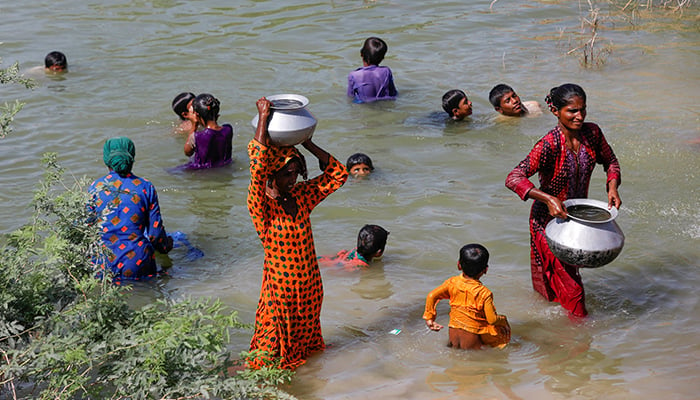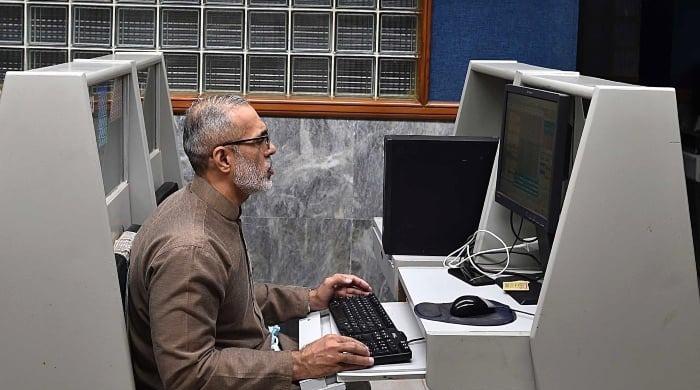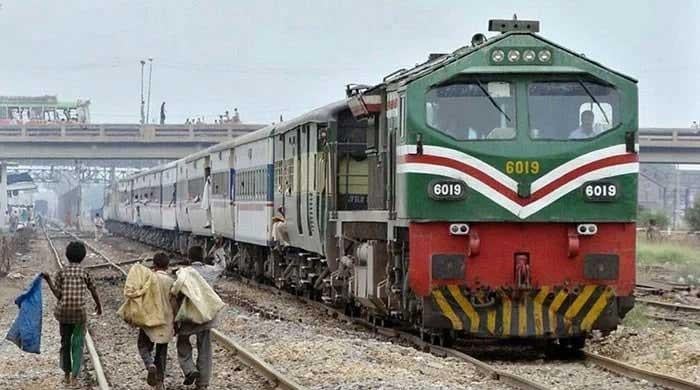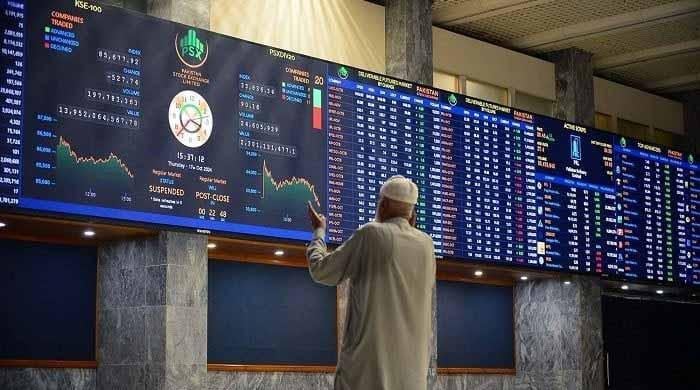Finance Ministry paints bleak picture of economy after flood devastation
Revision in macroeconomic targets will force government to renegotiate crucial targets with IMF
October 01, 2022

- Ministry of Finance hints at revising macroeconomic targets.
- Sees growth rate slowdown, inflationary pressures.
- Economic outlook has become uncertain for Pakistan.
In the wake of catastrophic floods, which badly affected the agriculture sector, the Ministry of Finance has hinted at revising macroeconomic targets such as growth rate slowdown and an upsurge in inflationary pressures for the current fiscal year (2022-23).
“Pakistan’s external environment faces rising challenges. Recent floods have negatively impacted crops, altering the economic outlook mostly through agriculture performance,” the Ministry of Finance stated in its monthly economic update and outlook report released on Friday.
The revision in macroeconomic targets will force the incumbent regime to renegotiate crucial targets with the International Monetary Fund (IMF) for the current financial year 2022-23.
However, the report maintained that the economic outlook has become uncertain for Pakistan during the current fiscal year and will likely remain below the target.
“Macroeconomic imbalances may ease with the expected slowdown in the economic growth” stated the Finance Ministry report.
In March 2022, international oil and food prices crossed the upper bound of the margins observed in the last two decades resulting in inflationary pressures in Pakistan as well.
Even if international commodity prices mean-revert in the near future, domestic inflationary pressure may not subside due to delayed adjustments and second-round effects.
“Besides, the depreciation of the Pakistani currency continues to exert upward pressure on domestic prices. At the same time, recent exceptional floods have destroyed human, physical, and livestock capital and deprived many families of their assets and incomes,” added the report.
The loss of lives and capital will certainly affect the creation of gross value added and hence economic growth. The latter was already under pressure due to unstable economic conditions in the rest of the world, the necessary fiscal consolidation, high rates of interest, and inflation.
It states that geopolitical conflicts continue to exist. Global and domestic uncertainties surround the economic prospects. High inflation, aggressive monetary tightening, and uncertainty from the Ukraine war and pandemic have hampered the global outlook in 2022.
Soaring food and energy prices are eroding real earnings, generating a global cost-of-living catastrophe for vulnerable communities. The US, China, and the EU are slowing, which is affecting other countries.
Rising government borrowing costs and capital outflows exacerbate fiscal and BOP pressures in many developing countries on the basis of forward-looking indicators, further slowdown in global growth is expected.
Therefore, inflation has started reverting as the month-on-month basis price increases have been on a declining path during the last two months.
However, the year-on-year inflation has shown significant acceleration from June to August.
Since March, the Pakistani rupee's depreciating against the US dollar. One worrisome problem is the devastating effects of recent floods causing huge damage to a substantial part of crops.
However, the government is attempting to improve supplies of commodities by allowing trade from neighbouring countries. Still, the risk of second-round effects of recent inflationary shocks persists, which may work themselves through the markets.
Interestingly, the month of August shows a positive seasonality in the monthly inflation rate. However, September may show a halt to the recent drastic accelerations of the monthly inflation rate.
The agricultural outlook is still not clear as the output of both important and other Kharif crops has suffered significantly due to recent floods and unprecedented heavy monsoon rains. The standing water in the agricultural fields may also affect the sowing of Rabi crops.
Industrial activity measured by the large-scale manufacturing (LSM) index (rebased on prices of 2015-16) is the sector which is most exposed to the developments in international markets. The LSM cycle is following the cyclical movements of the main trading partners.
Since the start of the current fiscal year, economic activity seems to have fallen to a lower growth path.
Contributing indicators to this observation are the growth slowdown in the rest of the world, limited yearly growth in manufacturing, high domestic inflation, eroding real incomes, and raising production costs. Probably, the data do not yet incorporate the economic costs of the recent floods.
According to the balance of payment data, the trade deficit declined marginally in July. Both exports and imports gained strength. For the coming months, the baseline scenario shows moderation in imports, following a domestic growth slowdown.
At the same time, exports would stabilise helped by a relatively stable real effective exchange rate at historically low levels.
As a result, the trade balance could be expected to improve. Remittances are expected to stabilise at around current levels.
This together with the expected path of the trade balance and other primary and secondary income transactions would guide the current account balance towards further improvement.
However, the scenario may be perturbed significantly by the consequences of the recent floods. These may limit export capacity and at the same time require more imports to satisfy the demand for products and harvests foregone.
For the current financial year, the fiscal deficit is budgeted to reduce to 4.9% of GDP, while the primary balance is a surplus of Rs153 billion.
The budget was prepared to achieve the goals of stabilising economic growth, increasing revenues, rationalising expenditures through prudent expenditure management, enhancing exports, and protecting the vulnerable segments of society through relief measures and pro-poor initiatives.
However, the economy of Pakistan has been affected severely by widespread destruction brought by extreme flooding.
Consequently, there will be a detrimental impact on the government’s fiscal situation from both the revenue and expenditure sides, the report concluded.
Originally published in The News









